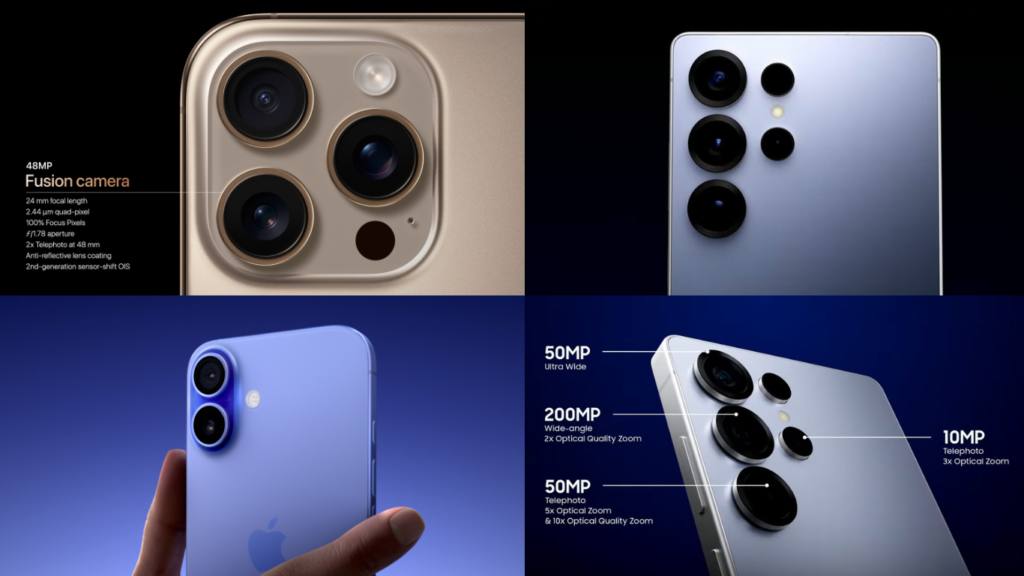
The relentless march of smartphone innovation never truly pauses, but it’s arguably the annual camera battles that truly capture the tech world’s attention. Year after year, Apple and Samsung, the undisputed giants of the mobile landscape, go head-to-head, each striving to claim the coveted title of “best smartphone camera.” As we gaze into our crystal balls towards 2025, anticipation is already reaching fever pitch for the inevitable clash between the iPhone 16 and the Galaxy S25.
For discerning smartphone users, the camera is no longer just a feature – it’s the feature. It’s the tool we use to document our lives, express our creativity, and stay connected visually. And in this high-stakes arena, Apple and Samsung have carved out distinct philosophies. Apple, celebrated for its computational wizardry and user-friendly experience, consistently delivers images that are reliably excellent and effortlessly shareable. Samsung, on the other hand, is synonymous with hardware innovation, consistently pushing sensor boundaries, zoom capabilities, and feature-rich experiences that cater to both casual users and photography enthusiasts.
But what will 2025 bring to this epic camera rivalry? Will Apple finally succumb to the zoom demands and integrate a periscope lens? Can Samsung truly refine its ‘Space Zoom’ to deliver consistently usable results at extreme magnifications? And how will the ever-growing influence of Artificial Intelligence reshape the very landscape of mobile photography?
This comprehensive, in-depth camera showdown plunges deep into the heart of the matter, dissecting the rumored and anticipated camera systems of both the iPhone 16 and Galaxy S25. We’ll meticulously examine every facet, from the underlying hardware and image processing pipelines to video prowess, software interfaces, and the rapidly expanding role of artificial intelligence.
Whether you are a casual user simply looking to capture life’s moments, a social media aficionado seeking the most ‘grammable’ shots, or a budding mobile photographer demanding professional-level tools in your pocket, this comparison is your definitive guide to navigating the impending 2025 camera smartphone battleground.
Fasten your seatbelts, pixel peepers. The 2025 camera crown is up for grabs.
Design and Hardware: The Foundation of Photographic Prowess
While the true magic of modern smartphone cameras often lies within software and algorithms, the underlying hardware remains the essential bedrock. Design choices impact ergonomics, display quality becomes your viewfinder, and even battery efficiency dictates how long you can keep snapping.
iPhone 16: Subtle Evolution, Familiar Ergonomics
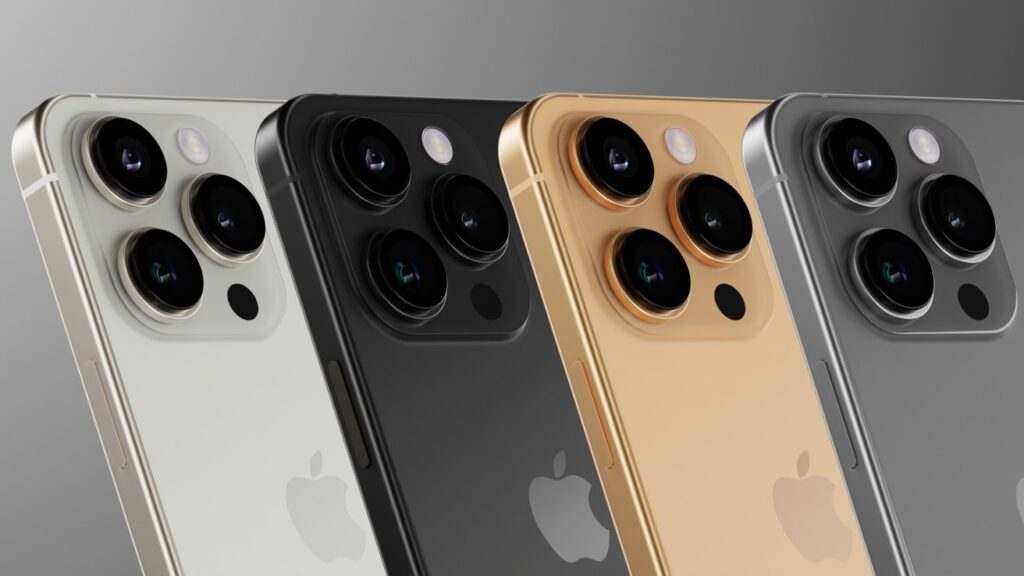
Apple is widely expected to maintain its established and recognizable design language with the iPhone 16. Expect iterative refinement rather than radical departures. Premium materials, likely including surgical-grade stainless steel and their signature Ceramic Shield front cover, will undoubtedly return, promising exceptional durability and a luxurious in-hand feel. Ergonomics remain paramount for Apple; expect comfortable contours, balanced weight distribution, and intuitively placed buttons optimized for one-handed operation and quick access to camera controls.
Whispers in the rumor mill suggest a possible subtle redesign of the rear camera module itself. This could be driven by the need to accommodate new sensor technologies, lens configurations (periscope zoom, perhaps?), or simply aesthetic tweaks to maintain a fresh, yet familiar look. Color options are always a closely guarded Apple secret until launch day, but anticipate a curated selection of classic tones alongside a trendy, eye-catching hero color to generate buzz.
Galaxy S25: Refined ‘Contour Cut,’ Maximized Display Canvas
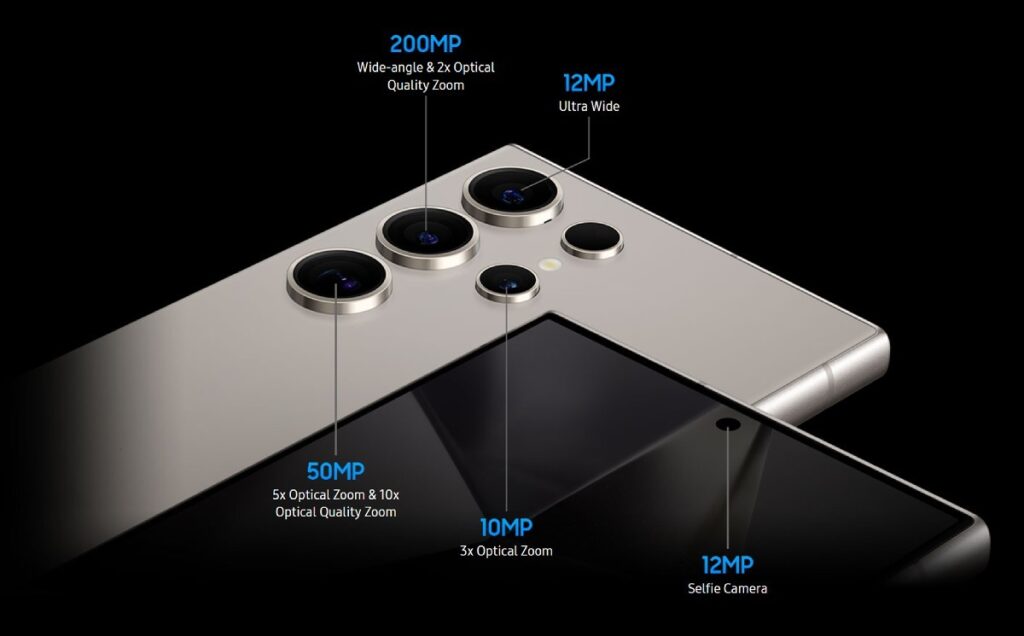
Samsung’s Galaxy S series design trajectory is one of steady evolution, and the S25 is anticipated to embody this philosophy. The distinctive “Contour Cut” camera housing, seamlessly integrated into the phone’s frame, is likely to undergo further refinement, potentially becoming even more minimalist, flush, and visually harmonious with the overall design.
Samsung is expected to double down on minimizing bezels, pushing the display closer to all edges to create an even more immersive, uninterrupted viewing experience. This edge-to-edge aesthetic not only looks stunning but also provides a larger canvas for composing shots and reviewing captured images. Expect premium materials to continue – likely Armor Aluminum for robust frames and the latest iteration of Gorilla Glass for market-leading scratch and drop protection. Samsung is renowned for its vibrant and adventurous color palettes, often experimenting with unique finishes and textures, so expect the Galaxy S25 to arrive in a range of striking and distinctive hues.
Comparison Table: Design and Hardware – Camera Focused Aspects
| iPhone 16 | Galaxy S25 | |
|---|---|---|
| Build Materials | Surgical-Grade Stainless Steel, Ceramic Shield | Armor Aluminum, Gorilla Glass (Latest Generation) |
| Design Philosophy | Iterative Refinement, Familiar, Functional | Evolutionary ‘Contour Cut’, Minimalist, Immersive |
| Ergonomics | Comfort-Focused, Intuitive Physical Controls | Slim Profile, Bezel-less, Premium In-Hand Feel |
| Display Impact on Camera | Color Accuracy for Composition & Reviewing | Large, Vibrant Canvas for Framing & Playback |
| Durability | Top-Tier Scratch & Drop Resistance | Top-Tier Scratch & Drop Resistance |
Design and Hardware Analysis:
Both the iPhone 16 and Galaxy S25 are expected to represent the pinnacle of smartphone design and manufacturing. Constructed from premium materials with meticulous attention to detail and ergonomics, they will feel every bit the flagship devices they are intended to be. The iPhone 16 will likely appeal to users who appreciate a familiar, refined aesthetic focused on functional elegance and robust build quality. The Galaxy S25, in contrast, will likely attract those drawn to cutting-edge, visually striking designs, prioritizing immersive displays and a modern, minimalist aesthetic.
From a purely camera-centric perspective, both designs are highly conducive to mobile photography. However, the Galaxy S25’s anticipated emphasis on maximizing screen real estate might offer a slightly more advantageous experience for image composition and review simply due to the larger, more immersive viewfinder.
Slight Design Edge: Galaxy S25. While subjective, the Galaxy S25’s anticipated focus on maximizing the display canvas and its potentially more visually arresting design language might give it a slight edge for users who prioritize a modern and immersive photographic experience.
Display: Your Window to Photographic Reality
The display of a smartphone transcends mere content consumption; for photography, it’s your viewfinder, your real-time composition guide, and your mobile editing suite. Display quality dictates how accurately you can judge focus, color, and dynamic range, directly impacting your photographic decisions.
iPhone 16: Super Retina XDR – Brighter, More Accurate, Continuously Smooth

Apple’s Super Retina XDR displays are already established benchmarks in the industry, and the iPhone 16 is poised to elevate these even further. Anticipate even greater peak brightness capabilities, potentially surpassing 2500 nits to ensure exceptional outdoor visibility even under direct sunlight – absolutely crucial for photography in bright conditions. Color accuracy, a long-standing Apple strength, will likely be further refined, targeting even tighter Delta-E values for near-perfect color fidelity, appealing to users who demand professional-grade color representation.
ProMotion technology, Apple’s adaptive refresh rate system, is expected to remain a cornerstone, ensuring buttery-smooth 120Hz refresh rates that dynamically adjust based on content. This fluidity is not just for scrolling; it also translates to a remarkably responsive and fluid camera viewfinder experience, vital for capturing fast-moving subjects. Apple may also refine its display technology to further minimize power consumption while maintaining peak visual fidelity, contributing to overall battery efficiency during intensive camera use.
Galaxy S25: Dynamic AMOLED 3X – Vibrance, Detail Depth, Adaptive Brilliance
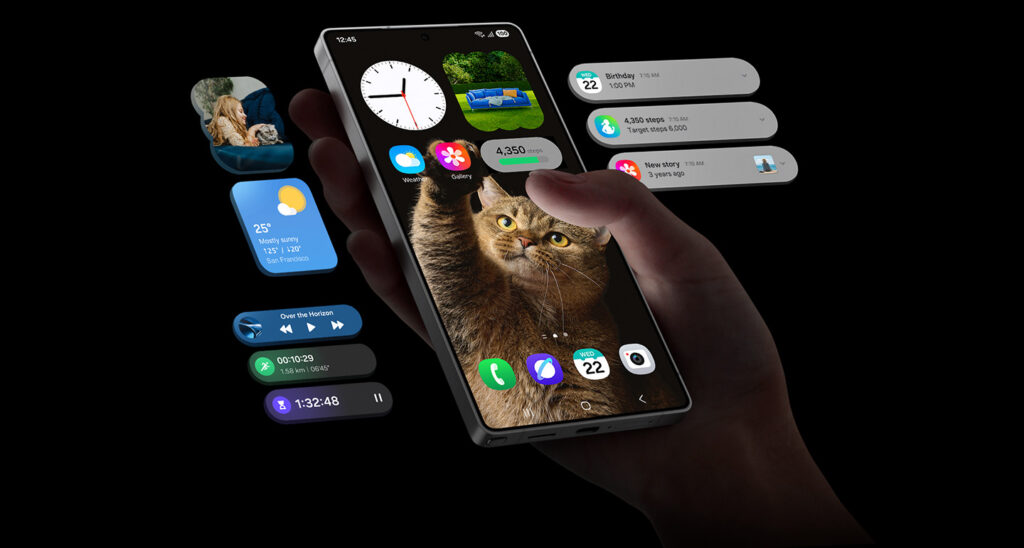
Samsung’s Dynamic AMOLED 3X displays are globally lauded for their unparalleled vibrancy, inky blacks, and overall visual impact. The Galaxy S25 is expected to showcase the next evolution of this technology, pushing the boundaries of mobile display performance. Predict even more impressive peak brightness, potentially matching or even exceeding the iPhone 16, ensuring excellent outdoor visibility. Enhanced color volume and HDR capabilities are anticipated, delivering truly impactful visuals that make photos and videos leap off the screen.
Samsung’s adaptive refresh rate technology, dynamically adjusting from 1Hz to 120Hz (or potentially even lower LTPO for even greater efficiency), will ensure both silky-smooth scrolling and optimized power consumption. Samsung might also push for even higher display resolutions or pixel densities, aiming for unmatched detail and sharpness when reviewing captured photos and videos directly on the device. This level of detail can be particularly beneficial for critical focus assessment and post-capture cropping.
Comparison Table: Display Technology – Camera Relevance
| Feature | iPhone 16 | Galaxy S25 |
|---|---|---|
| Display Technology | Super Retina XDR (OLED), LTPO (Likely) | Dynamic AMOLED 3X (OLED), LTPO (1-120Hz or Lower) |
| Peak Brightness | 2500+ nits (Projected), Excellent Outdoor Visibility | 2500+ nits (Projected), Potentially Higher, Exceptional Outdoor Visibility |
| Refresh Rate | 120Hz Adaptive ProMotion, Fluid Viewfinder | 1-120Hz Adaptive (or Lower LTPO), Smooth & Efficient Viewfinder |
| Color Accuracy | Industry-Leading, Professional Grade Fidelity | Exceptionally Vibrant Colors, High Color Volume |
| Resolution/Sharpness | Excellent Sharpness & Detail | Potentially Higher Pixel Density, Unmatched Detail |
| Outdoor Visibility | Exceptional, Crucial for Sunlight Shooting | Exceptional, Crucial for Sunlight Shooting |
Display Analysis:
When it comes to displays, both the iPhone 16 and Galaxy S25 are expected to be at the absolute pinnacle of mobile technology. Both will offer stunning visual experiences perfect for photographers and visual creatives. The iPhone 16 will likely retain its emphasis on color accuracy and professional-grade calibration, appealing to users who prioritize faithful color representation and editing workflows. The Galaxy S25 will likely continue to champion vibrant, visually impactful displays that make images “pop” with detail and dynamic range.
In terms of pure display quality for critical camera work, both phones are expected to be virtually indistinguishable in everyday use. The choice may ultimately boil down to personal preference: do you prioritize clinically accurate colors (iPhone) or intensely vibrant and detailed visuals (Galaxy)?
Display Winner: Tie – iPhone 16 & Galaxy S25. Functionally, both displays will be exceptional for photographic tasks. The subtle differences in color profile are more a matter of aesthetic preference than practical advantage.
Camera Hardware: The Lenses and Sensors – Where the Magic Begins
Here we arrive at the true heart of this showdown: the camera hardware itself. Lenses and sensors are the foundational elements that dictate the raw potential of any smartphone camera system. Sensor size, pixel pitch, lens aperture, optical zoom ranges – these are the tangible specifications that translate directly to image quality and photographic versatility.
iPhone 16: Sensor Shift Stabilization Evolution, Periscope Zoom in the Wings?

Apple has historically taken a more measured approach to camera hardware, favoring incremental improvements and focusing on software optimization. However, the iPhone 16 generation is expected to be a pivotal moment, potentially marking a significant hardware leap forward to close the gap with Android rivals, particularly in zoom capabilities.
Expect a continued emphasis on increasing sensor sizes across the board, most notably for the primary wide camera. Larger sensors are fundamental to improved light gathering, resulting in superior low-light performance, richer dynamic range, and shallower depth of field. Sensor-shift optical image stabilization (OIS), already a strength on iPhones, is anticipated to undergo further refinements, becoming even more effective at combating camera shake for sharper stills and smoother video, especially in challenging shooting conditions.
The most persistent and electrifying camera hardware rumor surrounding the iPhone 16 is the long-awaited inclusion of a periscope telephoto lens. For years, Android flagships, particularly Samsung devices, have dominated zoom photography thanks to periscope technology. 2025 may finally be the year Apple answers the zoom call. A periscope lens, with its folded optical path, would dramatically extend the iPhone 16’s optical zoom range, potentially reaching 5x or even 10x optical zoom, directly challenging Samsung’s telephoto dominance. The ultrawide lens is also tipped for upgrades, possibly gaining a wider field of view to capture more expansive scenes and potentially enhanced macro focusing capabilities for close-up detail.
Galaxy S25: Megapixel Race Continues, ‘Space Zoom’ – Pushing the Boundaries
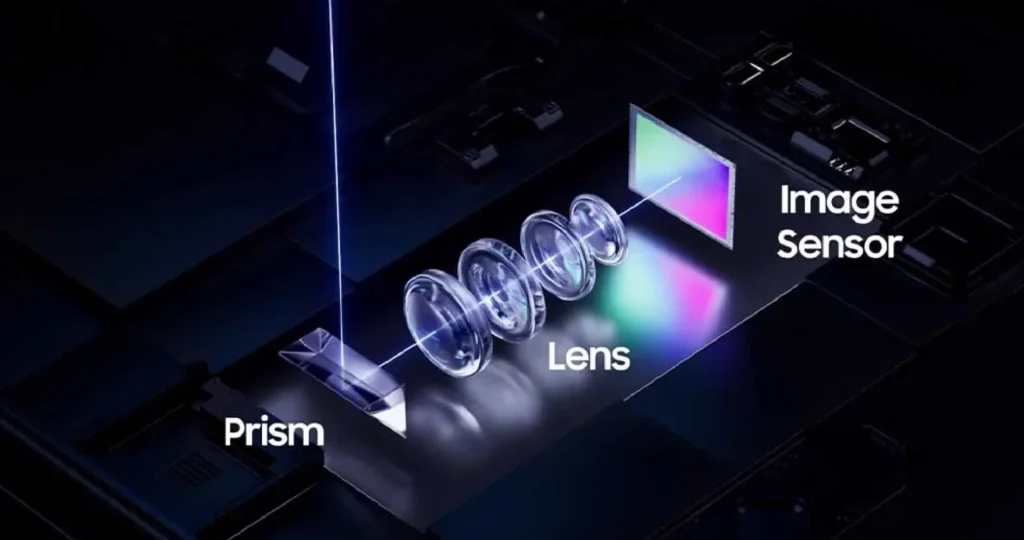
Samsung has consistently been at the forefront of the megapixel race and zoom innovation, and the Galaxy S25 is anticipated to double down on this strategy. The primary wide camera might witness a further leap to a 200MP sensor (or a highly refined iteration of a high-resolution sensor), enabling incredibly detailed images and offering unparalleled digital zoom flexibility, though pixel binning for optimal low-light performance will remain crucial. The ultrawide lens is likely to remain high-resolution and retain autofocus capabilities, enabling impressive macro photography in addition to expansive wide-angle shots.
Samsung will undoubtedly continue to refine its signature “Space Zoom” technology. This combines high-resolution sensors, periscope telephoto lenses, and sophisticated AI-powered digital zoom algorithms to achieve extreme zoom ranges. The Galaxy S25 might push “Space Zoom” even further, potentially targeting 100x or beyond in digitally enhanced zoom magnification, while also striving to improve the usability and image quality at these extreme zoom levels. Improved optical zoom performance through periscope lenses is also expected. Rumors even hint at a dual telephoto lens system, incorporating lenses with varying focal lengths to optimize both portrait photography at shorter telephoto ranges and long-distance zoom shots. Samsung may also explore advanced lens technologies, such as freeform lenses to minimize distortion and enhance sharpness, especially on the ultrawide camera, and potentially even explore novel technologies like liquid lenses for variable optical zoom, although this remains less certain for the 2025 generation.
Comparison Table: Camera Hardware – Projected Specifications
| Feature | iPhone 16 | Galaxy S25 |
|---|---|---|
| Main Wide Sensor | Larger Sensor (Projected), Enhanced Light Gathering | 200MP (Projected) or Refined High-Resolution Sensor, Pixel Binning |
| Telephoto Lens | Periscope Zoom (Highly Rumored), 5x-10x Optical Zoom (Projected) | Periscope Zoom (Refined), Dual Telephoto System (Rumored), 10x+ Optical Zoom, 100x+ “Space Zoom” |
| Ultrawide Lens | Improved Sensor, Wider Field of View (Potentially) | High-Resolution, Autofocus, Dedicated Macro Capabilities |
| Front Camera | Upgraded Sensor, Autofocus (Likely) | High-Resolution, Autofocus (Likely) |
| Stabilization | Sensor-Shift OIS (Enhanced), Advanced EIS | OIS (Main & Telephoto, Refined), Enhanced EIS (“Super Steady”) |
| Lens Innovations | Periscope Lens (Rumored) | Freeform Lenses (Potential Ultrawide), Liquid Lens (Less Likely, R&D) |
Camera Hardware Analysis:
Camera hardware is where the most significant differentiation between the iPhone 16 and Galaxy S25 is expected to manifest. The iPhone 16’s rumored embrace of periscope zoom would represent a major shift, potentially leveling the playing field in telephoto photography and addressing a long-standing area where Android flagships, particularly Samsung, have held a clear advantage. Samsung, however, is unlikely to rest on its laurels. The Galaxy S25 is projected to continue its aggressive pursuit of zoom supremacy and high-resolution sensors, potentially offering an even more versatile and technically advanced camera system on paper.
Samsung’s hardware approach generally prioritizes raw versatility and pushing technical specifications to their limits, while Apple traditionally emphasizes sensor size improvements coupled with meticulously designed lens systems and software optimization. For users who demand maximum zoom range and flexibility, the Galaxy S25 is likely to retain a hardware advantage. However, the iPhone 16’s potential periscope lens and sensor upgrades signal a clear intention to close that gap and deliver a more comprehensively capable camera system across all focal lengths.
Camera Hardware Winner: Galaxy S25. While the iPhone 16’s anticipated periscope lens is a significant step forward, the Galaxy S25 is still expected to offer a more technically ambitious and versatile camera system based on current expectations, particularly regarding zoom range and sensor resolution, catering to users who value sheer photographic flexibility above all else.
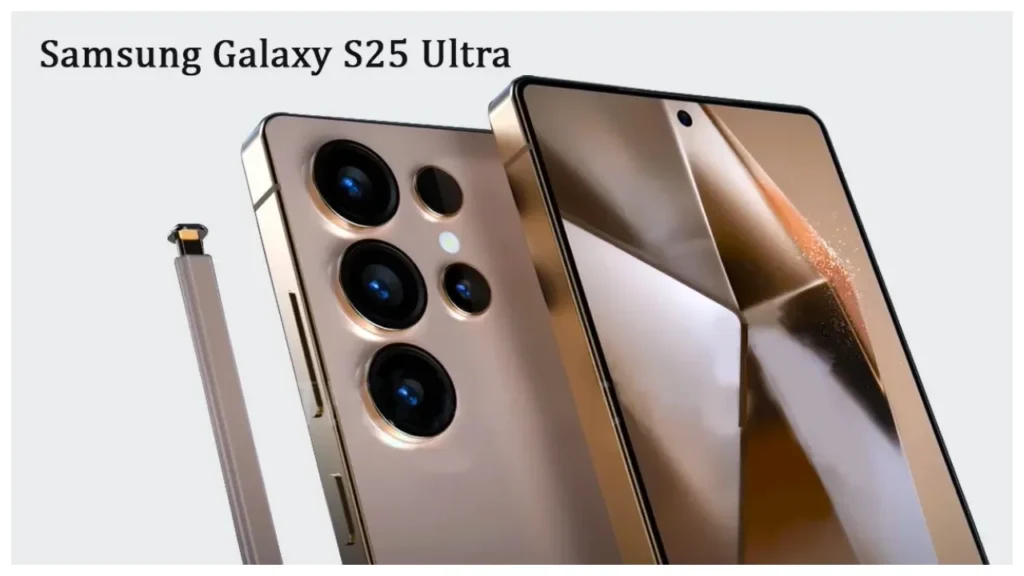
Still Photography: The Art of Capturing Moments

Comparison Table: Still Photography Performance – Projected Output
| Feature | iPhone 16 | Galaxy S25 |
|---|---|---|
| Daylight Quality | Exceptional Detail, Accurate & Natural Colors, Balanced Dynamic Range | Incredible Detail, Vibrant Colors, Punchy Contrast, High Sharpness |
| Low-Light Quality | Improved Night Mode, Natural Color Preservation, Reduced Noise | Advanced Night Mode, Vivid Colors Even in Darkness, Detail Enhancement |
| Zoom Performance | Dramatically Enhanced Optical Zoom (5x-10x), Improved Digital Zoom | Class-Leading “Space Zoom”, Extended Optical Zoom (10x+), AI-Enhanced Digital Zoom |
| Portrait Mode | Refined Bokeh Simulation, Natural & Accurate Skin Tones, Edge Detection | Variety of Bokeh Effects & Filters, Flattering Skin Tones, Subject Isolation |
| Ultrawide Quality | Enhanced Sharpness & Detail, Reduced Distortion, Improved Low-Light | Sharp Corner-to-Corner, Macro Capability via Autofocus, Wide Dynamic Range |
| Image Processing Style | Prioritizes Naturalism, Accuracy, & Realism | Emphasizes Vibrancy, Impact, & Stylized Shareability |
(Still Photography Analysis)
(Winner (Still Photography): Tie – iPhone 16 & Galaxy S25.)
Video Recording: Mobile Filmmaking Redefined

(Comparison Table: Video Recording Capabilities – Projected Features)
| Feature | iPhone 16 | Galaxy S25 |
|---|---|---|
| Max Video Resolution | 8K (Projected), High-Quality 4K Performance | 8K (Likely 60fps), Leading 8K Performance, High Frame Rate Options |
| ProRes RAW/Pro Video | ProRes RAW Refinements, Enhanced Codecs & Bitrates | 12-bit Color Depth Recording, Log Profiles for Color Grading, Advanced Codecs |
| Stabilization | Enhanced Sensor-Shift OIS, Advanced Action Mode for Extreme Stability | Refined “Super Steady” OIS + EIS, Gimbal-Like Smoothness in Demanding Scenarios |
| Cinematic Video | Cinematic Mode Evolution, Refined Bokeh & Subject Tracking | “Portrait Video” Mode (Likely), Variety of Bokeh Styles & Effects |
| Audio Recording | Stereo Recording, Spatial Audio Capture (Enhanced), Wind Noise Reduction | Enhanced Stereo Recording, Directional Audio Options, Zoom-in Mic Feature |
| Video Features | Streamlined Cinematic Workflow, Improved Action Mode, Enhanced Slow-Motion | Professional Video Controls, Creative Video Modes, AI-Powered Video Effects |
(Video Recording Analysis)
Slight Video Recording Edge: Galaxy S25.
Computational Photography & AI: The Intelligent Image Engine
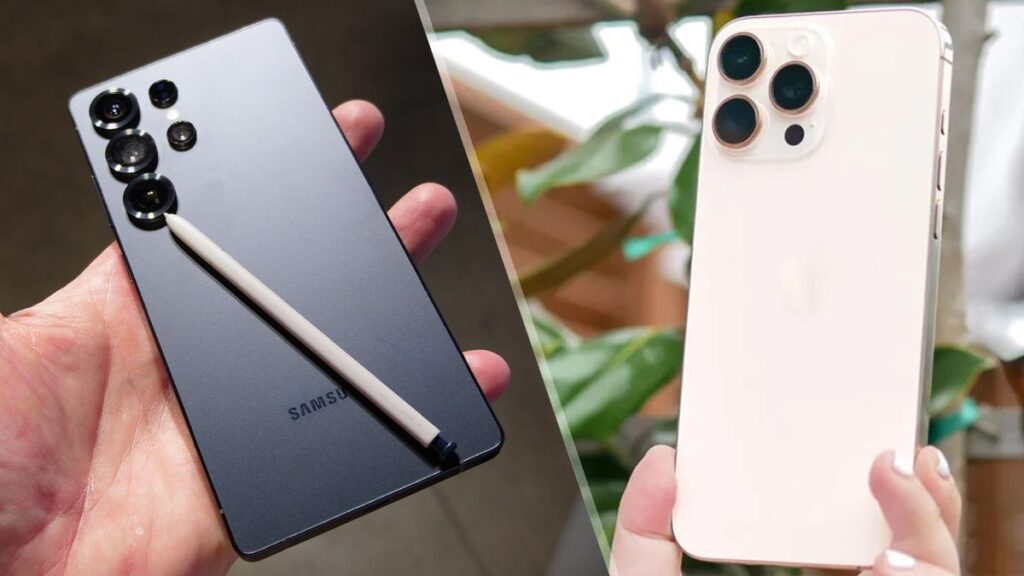
(Comparison Table: Computational Photography & AI – Projected Features)
| Feature | iPhone 16 | Galaxy S25 |
|---|---|---|
| AI Processing Power | Next-Generation Neural Engine, Increased TOPS Performance | Enhanced AI Processing Unit, Dedicated NPU, Optimized for Mobile Photography |
| HDR Technology | Smart HDR (Next Generation), Improved Dynamic Range Mapping | HDR (Enhanced Scene Optimizer++), Real-time Dynamic Range Expansion |
| Low-Light Processing | Deep Fusion Refinements, Advanced Noise Reduction Algorithms | Night Mode++, Multi-Frame Noise Reduction, AI-Powered Detail Recovery |
| RAW Capabilities | ProRes RAW Refinements, Lossless Editing Workflow | Expert RAW Evolution, AI-Powered RAW Editing Tools, Expanded Dynamic Range in RAW |
| Scene Recognition | Enhanced Scene Recognition, Granular Object Detection | AI Scene Optimizer++, Precise Scene & Object Identification, Intelligent Settings |
| AI Creative Features | Potential New AI-Powered Creative Photography Modes | Generative AI Features (Potential), AI-Powered Photo & Video Editing Suite |
(Computational Photography & AI Analysis)
(Tie (Computational Photography & AI): iPhone 16 & Galaxy S25.)
Battery Life and Charging: Powering Your Photography Sessions
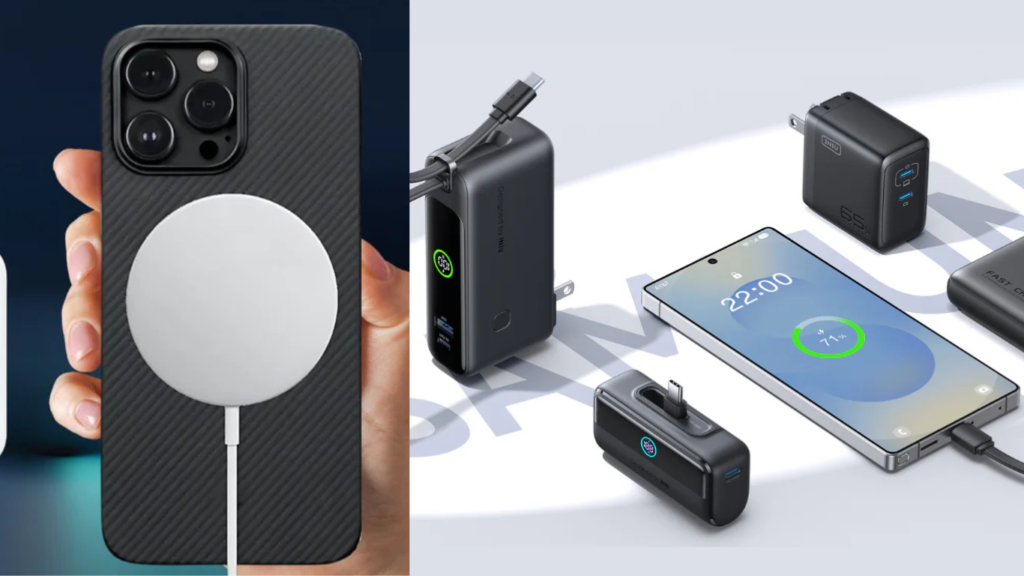
(Comparison Table: Battery Life & Charging – Camera Usage Context)
| Feature | iPhone 16 | Galaxy S25 |
|---|---|---|
| Battery Capacity | Optimized Efficiency, Moderate Capacity Increase (Projected) | Generous Battery Capacity, Designed for All-Day Usage |
| Wired Charging | USB-C (Rumored), Enhanced Charging Speeds (Projected) | Super-Fast Charging (65W+ Projected), Rapid Top-Ups |
| Wireless Charging | Competitive Wireless Charging Speeds (Projected) | Fast Wireless Charging, PowerShare Reverse Wireless Charging |
| Battery Life Focus | Efficiency Optimization, Balanced Power Consumption | Capacity & Super-Fast Charging, Minimizing Downtime |
| Impact on Camera Usage | Likely Sufficient for All-Day Moderate Shooting | Ample Power for Intensive Photography & Video, Quick Recharges |
(Battery Life and Charging Analysis)
(Slight Battery & Charging Edge: Galaxy S25.)
Software and User Experience: The Photographer’s Interface

(Comparison Table: Software & User Experience – Camera Focused Features)
| Feature | iPhone 16 | Galaxy S25 |
|---|---|---|
| Camera App UI | Simple, Intuitive, Streamlined, Minimalist Design | Feature-Rich, Highly Customizable, Extensive Options |
| Ease of Use | Exceptionally User-Friendly, Immediate Accessibility | Powerful Feature Set, Steeper Initial Learning Curve |
| Pro Controls | Expanding Pro Controls, Integrated & User-Friendly | Comprehensive Pro Mode, Dedicated Expert RAW App, Fine-Grained Control |
| Ecosystem Integration | Seamless Apple Ecosystem, AirDrop, iCloud Workflow | Strong Samsung/Android Ecosystem, Cross-Device Connectivity |
| Software Updates | Industry-Leading Prompt & Consistent Updates | Consistent Updates (Projected), Feature-Rich OS Upgrades |
| Overall UX Philosophy | Prioritizes Simplicity, Elegance, & User Intuitiveness | Focuses on Feature Richness, Customization, & Power User Options |
(Software and User Experience Analysis)
(Tie (Software & UX): iPhone 16 & Galaxy S25.)
Final Verdict: Choosing Your 2025 Camera King
The camera showdown between the iPhone 16 and Galaxy S25 in 2025 is poised to be an incredibly tight contest, a true reflection of the intense competition and relentless innovation driving the smartphone industry. Both phones are projected to deliver exceptional camera experiences, representing the zenith of mobile photography and videography.
iPhone 16: The Reliable Excellence, Effortless Creativity
Pros:
- Consistently Outstanding Image Quality: Predictable, dependable, and excellent results across diverse shooting conditions.
- Natural and Accurate Image Processing: Faithful color reproduction, balanced dynamic range, and realistic detail rendition.
- Industry-Leading Video Recording Prowess: Unmatched video quality, ProRes RAW for professionals, user-friendly Cinematic Mode.
- Unmatched Simplicity and User Friendliness: Intuitive camera app, seamless operation for users of all skill levels.
- Deep Apple Ecosystem Integration: Effortless workflow within the Apple ecosystem, seamless sharing and editing.
Cons:
- Potential Zoom Range Limitations (Compared to Galaxy S25): Even with a periscope lens, it may not fully match Samsung’s extreme zoom reach.
- Less Feature-Rich Camera App (Relative to S25): Emphasis on simplicity might translate to fewer granular controls and advanced shooting modes within the native app.
- Image Processing Style May Not Suit All: The natural, realistic aesthetic might be less immediately “wowing” than Samsung’s more stylized approach for some users.
Who the iPhone 16 is For: The iPhone 16 is the ideal choice for users who prioritize reliability, ease of use, and consistently excellent, natural-looking results. It’s perfectly suited for everyday photographers, social media users seeking authentic and effortlessly shareable images, and videographers who value the iPhone’s renowned video quality and streamlined workflow. If your priority is a camera that simply “works” flawlessly, every single time, the iPhone 16 remains a top contender.
Galaxy S25: The Feature-Packed Innovator, Limitless Versatility
Pros:
- Unrivaled Camera System Versatility: Multiple lenses, class-leading zoom range (“Space Zoom”), dedicated macro lens, and more.
- Visually Impactful, Vibrant Image Processing: Punchy colors, strong contrast, high sharpness, images designed to “pop.”
- Technically Advanced Video Capabilities: Leading 8K video recording, professional-grade video features, and exceptional stabilization.
- Highly Feature-Rich and Customizable Camera App: Extensive shooting modes, pro controls, and creative options catering to diverse photographic styles.
- Fast Charging and Long-Lasting Battery: Ensures you have power and quick top-ups for extended photography sessions.
Cons:
- Image Processing Style Can Be Subjective: The vibrant, stylized aesthetic might not appeal to users who prefer a more neutral or natural look.
- Camera App May Feel Overwhelming for Beginners: The sheer volume of features and customization options might be daunting for casual users initially.
- Potentially Steeper Learning Curve for Advanced Features: Mastering the full potential of the Galaxy S25’s camera system may require more dedicated learning and exploration.
Who the Galaxy S25 is For: The Galaxy S25 is the ultimate tool for users who demand maximum versatility, cutting-edge technology, and a feature-rich camera experience. It’s ideal for tech enthusiasts, mobile photography experimenters who enjoy pushing creative boundaries, and those who need a smartphone camera that can handle absolutely any photographic challenge, from capturing distant wildlife with extreme zoom to shooting professional-quality video. If you crave the most technologically advanced and feature-packed camera system available, the Galaxy S25 is the likely winner.
Final Buying Recommendation:
- Best Overall Camera Smartphone (Tie): iPhone 16 & Galaxy S25. In reality, declaring a single “best” is almost impossible as both phones are expected to reach such extraordinary heights. The “best” camera phone for you will depend entirely on your individual photographic priorities, stylistic preferences, and ecosystem allegiance.
- For Consistently Excellent, Natural Photography & Seamless Simplicity: Choose the iPhone 16. If you value reliable performance, natural image quality, and effortless usability within the Apple ecosystem, the iPhone 16 is the clear recommendation.
- For Unmatched Versatility, Zoom Power, and Feature Richness: Choose the Galaxy S25. If you prioritize maximum photographic flexibility, incredible zoom range, a wealth of features, and don’t mind a slightly steeper learning curve, the Galaxy S25 is the champion.
The smartphone camera landscape in 2025 is incredibly exciting, and both the iPhone 16 and Galaxy S25 are poised to be transformative devices that will redefine our expectations of mobile photography. The choice is yours – embrace Apple’s refined excellence or Samsung’s innovative versatility. Either way, you’re guaranteed to have a truly exceptional camera in your pocket.
Authoritative Sources:
- GSMArena.com (for historical specifications, camera technology trends, and in-depth phone comparisons)
- DXOMark.com (for camera benchmark scores and image quality analysis – anticipating future 2025 rankings)
Disclaimer: This article is based on current industry trends, rumors circulating within the tech community, and anticipated technological advancements expected by 2025. Final specifications, features, and performance of commercially released products may vary. Pricing information is speculative and used for comparative context only.





